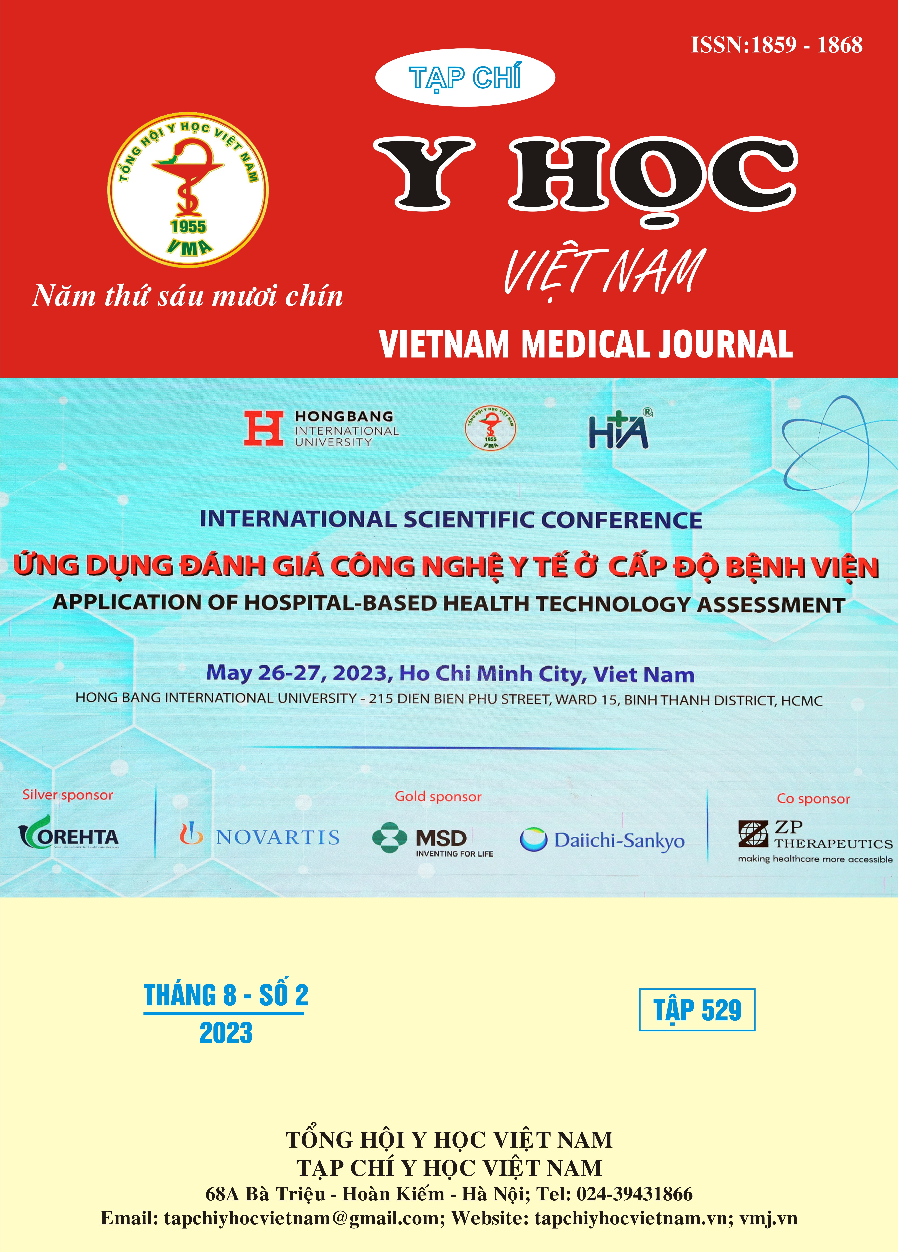THE CORRELATION BETWEEN CLINICAL DIAGNOSIS OF DIABETIC RETINOPATHY AND STANDARD DIGITAL FUNDUS IMAGING
Main Article Content
Abstract
Purpose: To eValuate the correlation between the clinical diagnosis of diabetic retinopathy (DR) under microscopy and standard digital retinal imaging. Materials and methods: The study was conducted on a group of diabetic patients who haVe taken the examination at the National Eye Hospital, patients were clinically examined and diagnosed under biomicroscopy by retinal specialist, digital fundus images are taken at the same time, the data will be independently classified and two sets of data collected would be calculated by Cohen’s Kappa coefficient, the clasification is based on the International Council of Opthalmology’s clasification of diabetic retinopathy. Results: In a total of 193 eyes of 98 patients participating in the study, when calculating the Cohen’s Kappa coefficient between the stages of DR , we all got the results of the subtantial to near perfect agreement, in which, when classifying DR at stages R3 and R4, we obtained the highest agreement, k = 0.77. The coefficient k = 0.9 when calculating the consensus between the nonproliferatiVe and proliferatiVe DR groups also receiVed a near perfect agreement when comparing the gold standard of clinical examination by the specialist in DR and fundus imaging classified by the ophthalmologist. Conclusion: The coefficient calculated when comparing the method of diagnosing diabetic retinopathy on clinical examination and fundus image has a subtantial agreement, so fundus imaging is an important tool to detect most sign of DR. The retinal imaging used in the diagnosis of diabetic retinopathy has high accuracy, is suitable for screening, detecting the disease at different stages, aVoiding serious complications in the eyes and saVing human resources in early diagnosis of this disease.
Article Details
Keywords
Diabetic retinopathy, stage of diabetic retinopathy, retinal image
References
2. O’Hare JP, Hopper A, MadhaVen C, et al. Adding retinal photography to screening for diabetic retinopathy: a prospectiVe study in primary care. BMJ. 1996;312(7032):679-682.
3. Kerr D, Cavan DA, Jennings B, Dunnington C, Gold D, Crick M. Beyond retinal screening:
digital imaging in the assessment and follow-up of patients with diabetic retinopathy. Diabet Med J Br Diabet Assoc. 1998;15(10):878-882.
4. Khizer R K. Retinal Physician - Retinal Imaging Modalities: AdVantages and Limitations for Clinical Practice. Retin Physician. Published online 2011.
5. Taylor et al. - 2013 Task Force on Diabetic Eye Care.pdf. Accessed May 13, 2021. http://www.icoph.org/downloads/ICOGuidelinesfo rDiabeticEyeCare.pdf
6. Wu L, Fernandez-Loaiza P, Sauma J, Hernandez-Bogantes E, Masis M. Classification of diabetic retinopathy and diabetic
macular edema. World J Diabetes. 2013;4(6):290- 294.
7. Hartling L, Hamm M, Milne A, et al. Table 2, Interpretation of Fleiss’ kappa (κ) (from Landis and Koch 1977).
8. Aptel F, Denis P, Rouberol F, Thivolet C. Screening of diabetic retinopathy: Effect of field number and mydriasis on sensitiVity and specificity of digital fundus photography. Diabetes Metab. 2008;34(3):290-293.
9. Lê Minh T. Ứng dụng kỹ thuật chụp ảnh màu Võng mạc để phát hiện bệnh lý Võng mạc đái tháo đường từ xa. Tạp Chí Học TP Hồ Chí Minh. 2007;(1).


